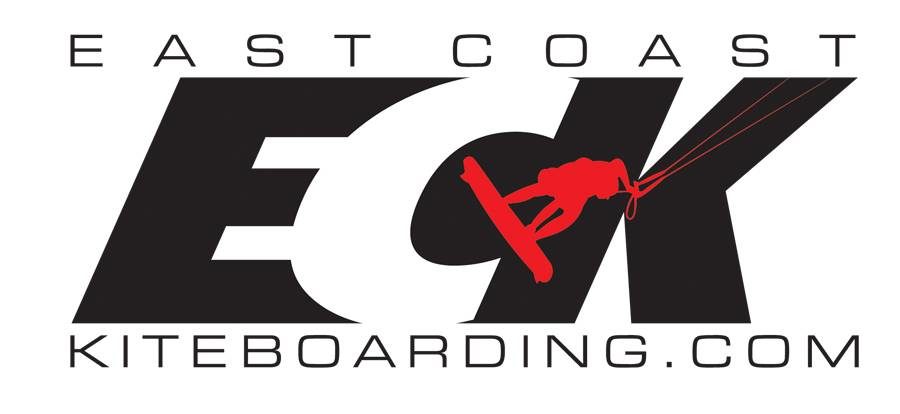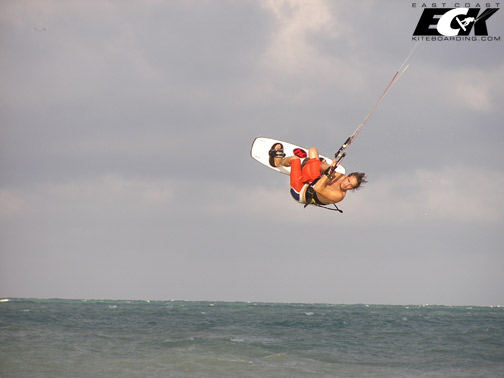Pump
1. Make sure your kiteboarding pump is in working order and well greased before the season starts. There is nothing worse than having to pump up a kite with a pump that feels like it’s full of sand. Also, check the hose and connection points for holes and leaks. If your pump hose is cracked or worn, go to Home Depot and pick up some 1” clear tubing, which will never break and allows you to see if you have sand in the hose.
Bar
2. The control bar is one of the most neglected pieces of kiteboarding equipment. Most kiteboarders will never look at their bar until the chicken loop is about to break or has broken. The control bar should be checked every month to three months depending on usage. First, start with the chicken loop, look for wear and thin spots in the line, if you’re unsure about when to replace it, it’s probably time. Next, go the leader lines, and inspect the connection at the bar, look for any frayed spectra and replace if unsure. Lastly, look over the center strap or center cleat that allows micro adjustments to the kite. Remember rinsing your bar in fresh water can extend the life of your bar and keep all parts in working order.
Lines
3. Little lines that require significant attention. Whether you’re riding four lines, five lines or an original two line kite (yes, they made two line kites), it’s essential you inspect your flying lines once every three months or after a major crash. One knot in a flying line can reduce the strength of that line by 50%. For those of you that haven’t started kiting yet, one line breaking while flying a power kite is like flying an airplane with one wing, not a good experience. If your lines do have knots or show signs of wear, be sure to replace both lines, this is due to the fact the flying lines stretch unevenly. Remember; when in doubt change them out!
Board
4. Almost every kiteboarder has had a foot strap blow out with no screwdriver in sight, ruining what could have been an epic session. Always check your foot strap screws and fin screws before going out, if you don’t want to bother, try applying a little blue lock tight to the screw threads when you first put your board together. Make sure you purchase the BLUE lock tight, any other lock tight and you will never be able to unscrew your foot straps or fins again.
Pig Tails
5. Those little-colored loops at the wing tips are ticking time bombs just waiting to pop. Be sure you check them every three to four months and replace at the first sign of wear. Most kiteboarding manufacturers supply extra pigtails; however, you can also make your own out of spectra line.
Harness
6. Whether you wear a waist harness, seat or impact vest it’s crucial you check the stitching where the spreader bar attaches once every six months. In our experience, harness only lasts about two seasons after which the harness begins to wear out.
Spreader Bar
7. Why would a piece of metal fail? Because ten percent of kiteboarders are still using aluminum windsurfing spreaders bars or have a swivel spreader bar that can fail unexpectedly. If you or
someone you know is using one of these, it’s time for an intervention. Let them know how dangerous they are and help them replace it immediately.
Bladders
8. Imagine the fright when your kite starts to fold in half because its leading edge bladder just went flat. Always know what your bladders are doing and if you have a bladder problem fix them immediately.
Kite
9. The holy grail! Many things can go sideways when a thin piece of ripstop tears. Be sure to check for any small tears in the canopy as well as any stitching that may be unraveling. One small rip can turn into one long split. If you do find a tear in your kite, always tape both sides, provided the rip is less than two inches. For damage larger than two inches, have the kite repaired professionally here.
You
10. Make sure you’re ready for the conditions at hand. Many beginners, as well as advanced riders, are very anxious to hit the water but sometimes forget to do necessary safety checks before they ride. Always make sure you run through the four preflight safety checks before riding and before launching someone else. Remember; when in doubt don’t go out.

